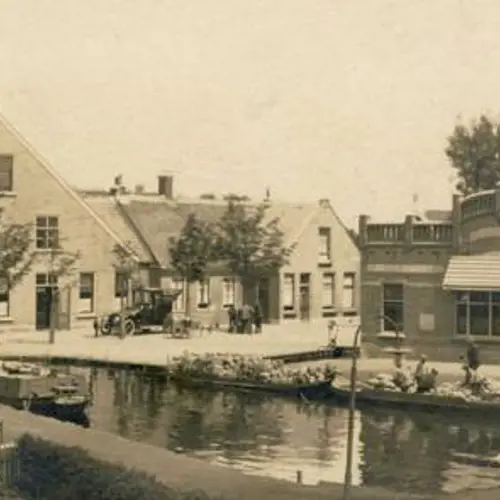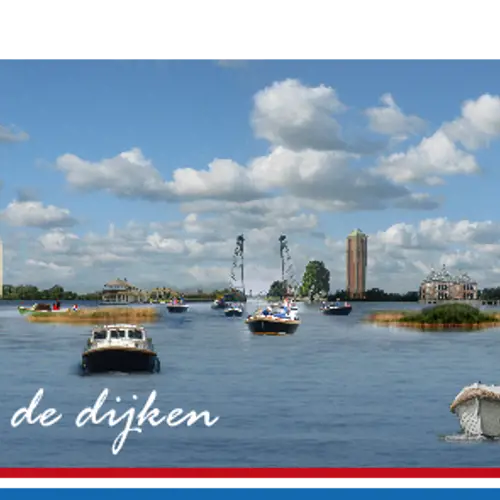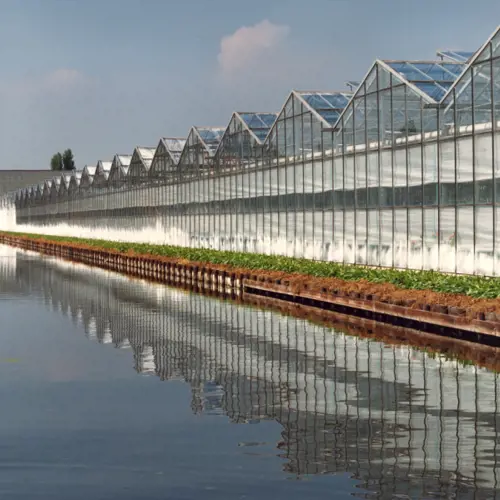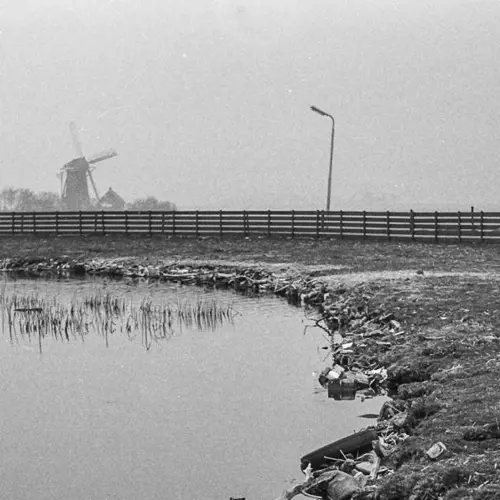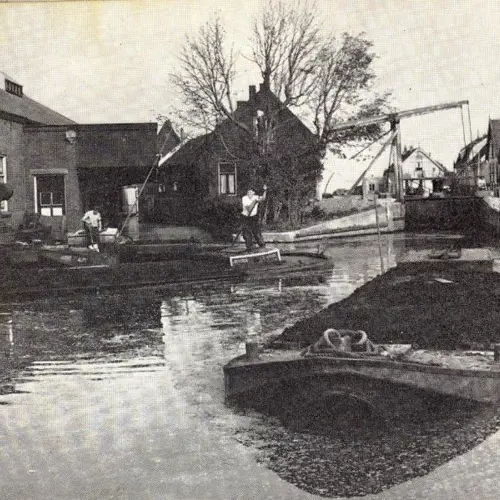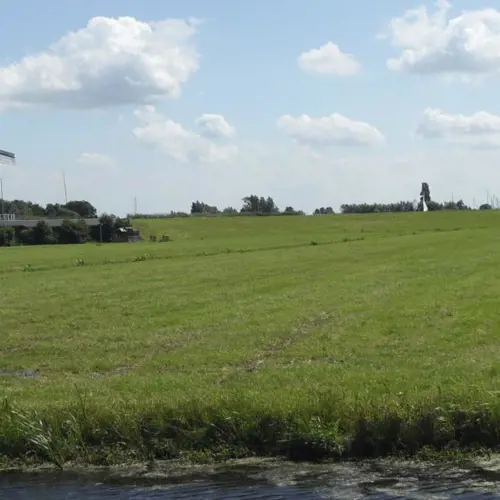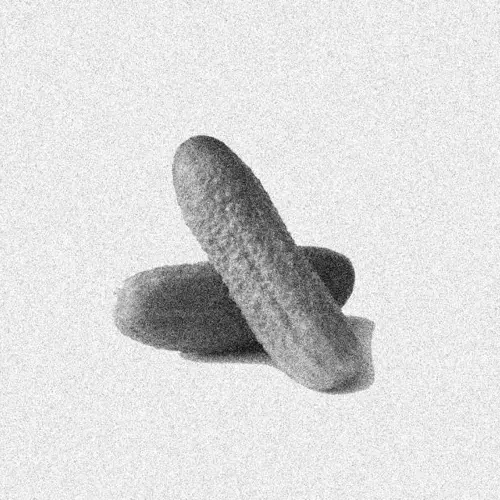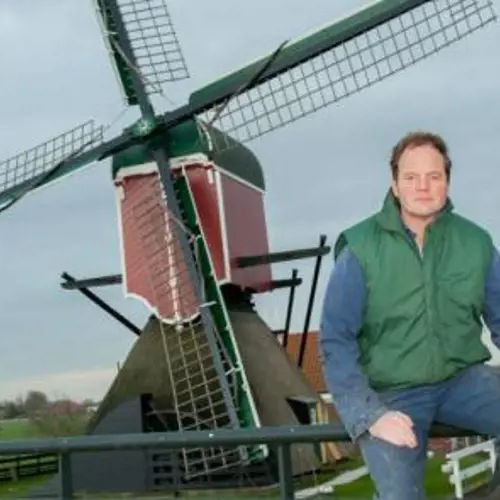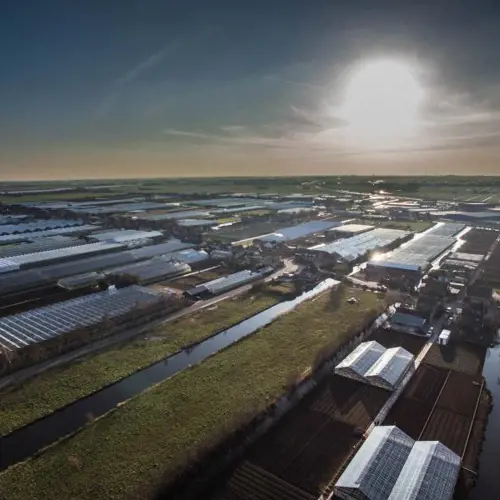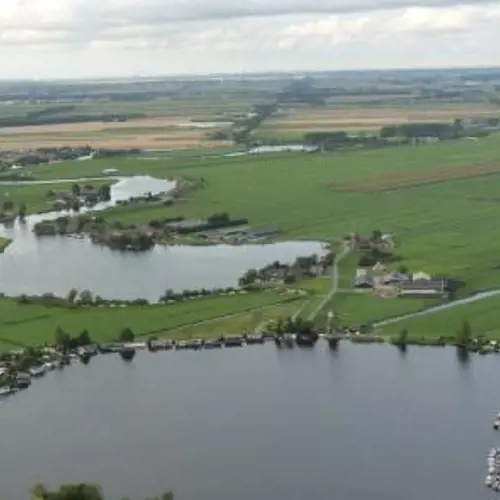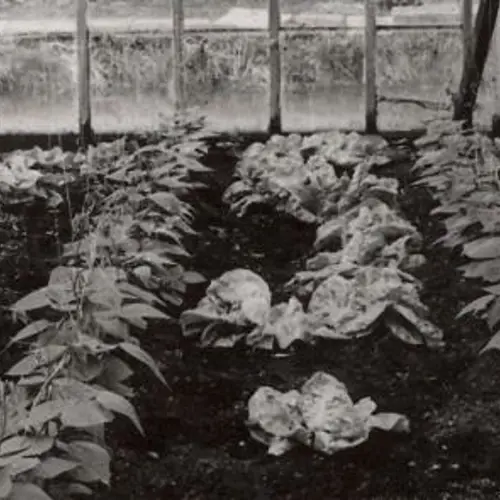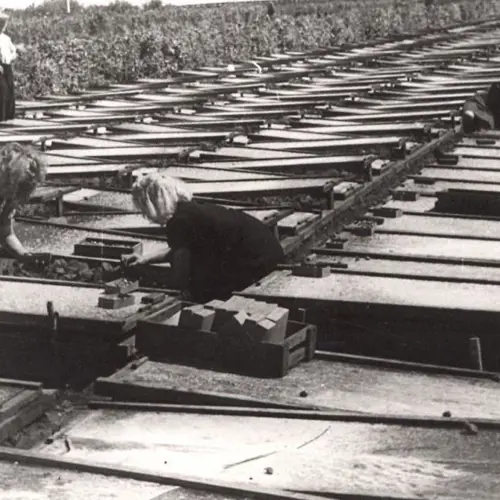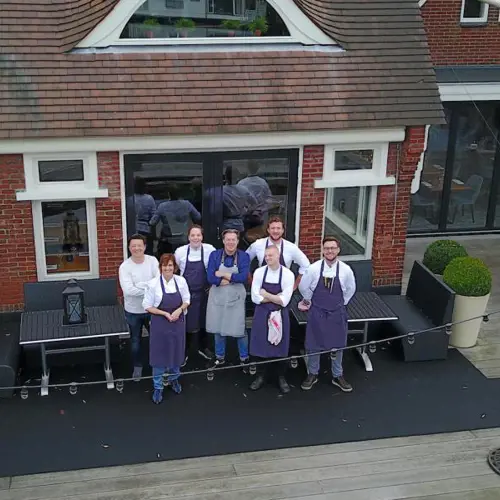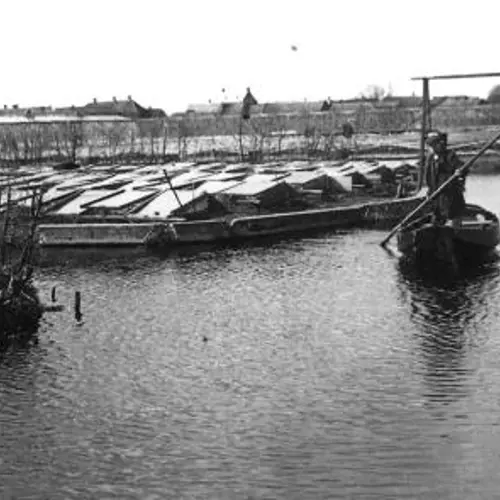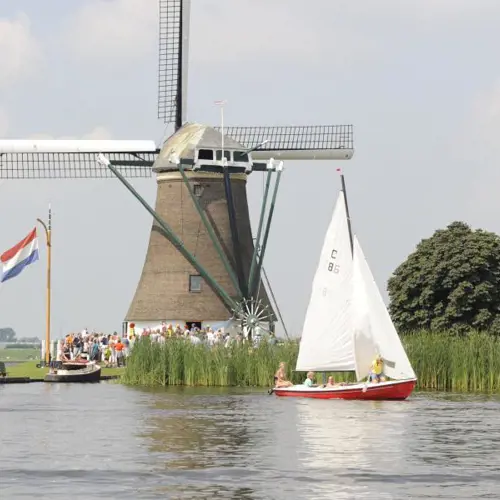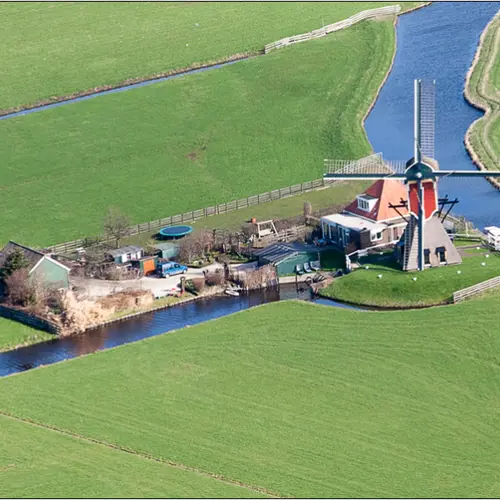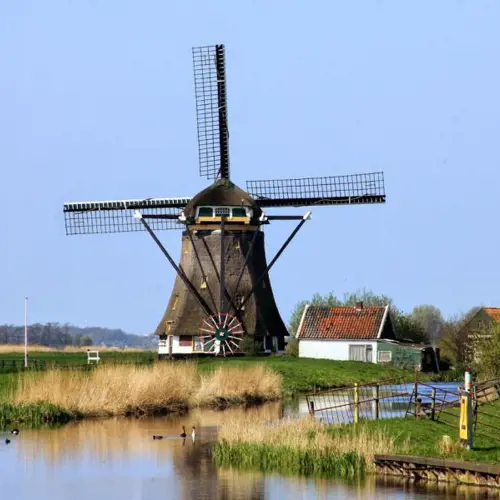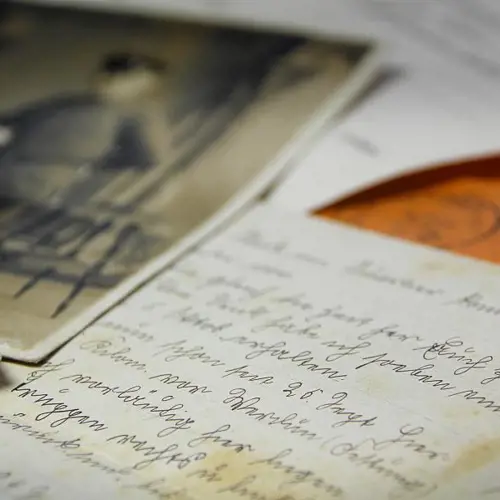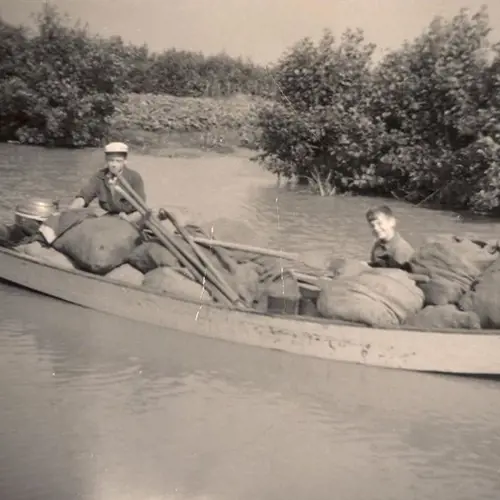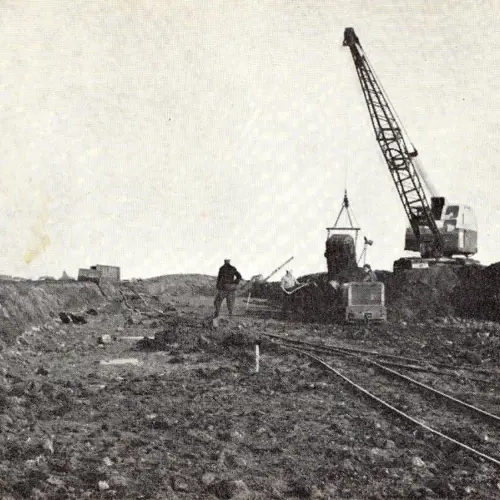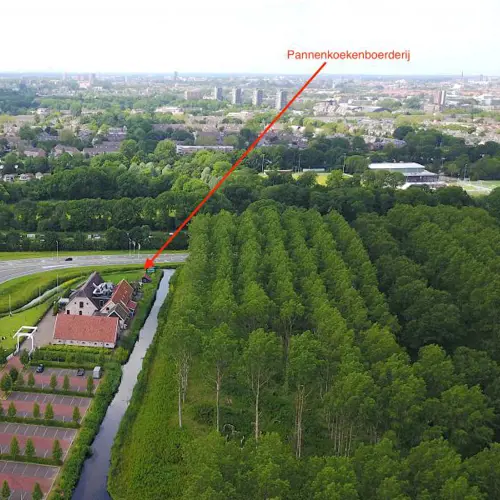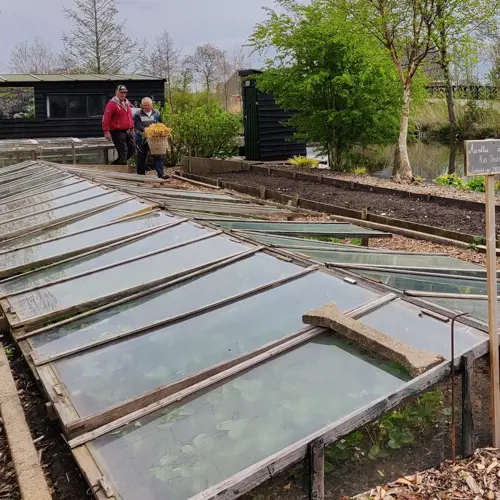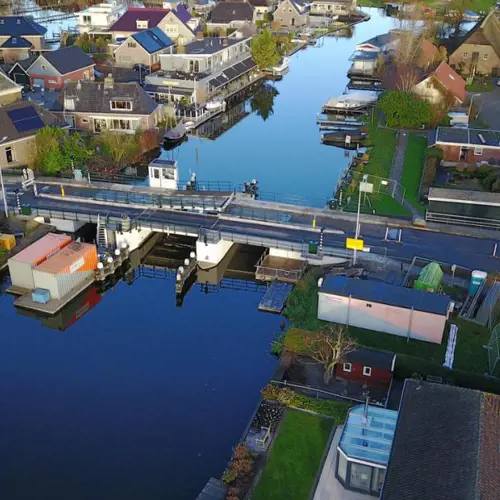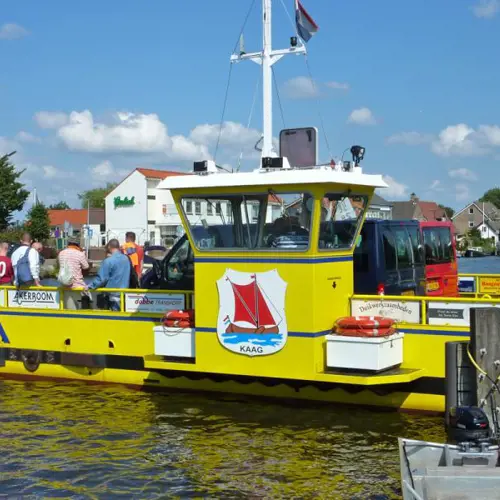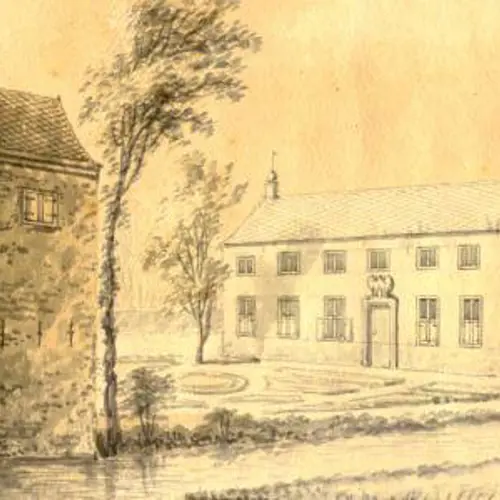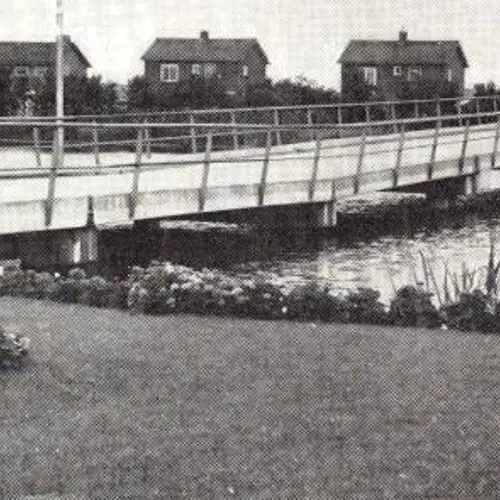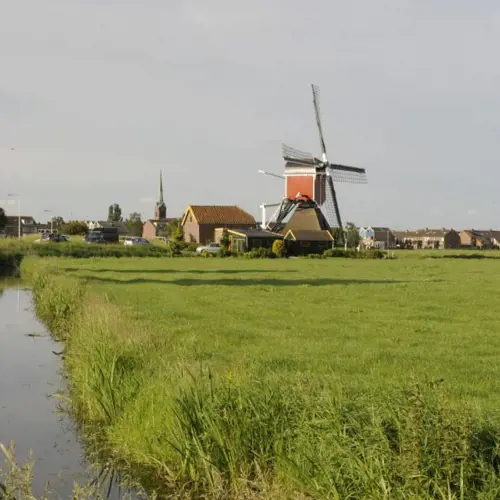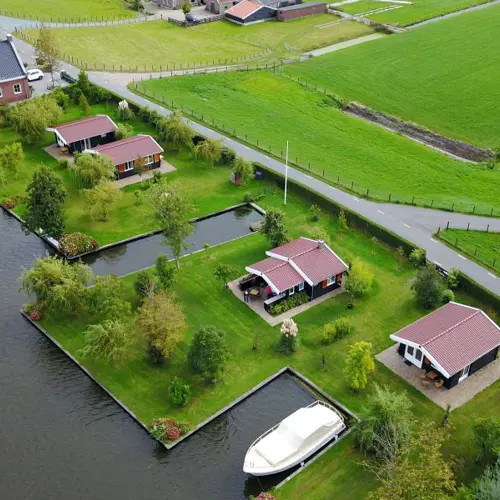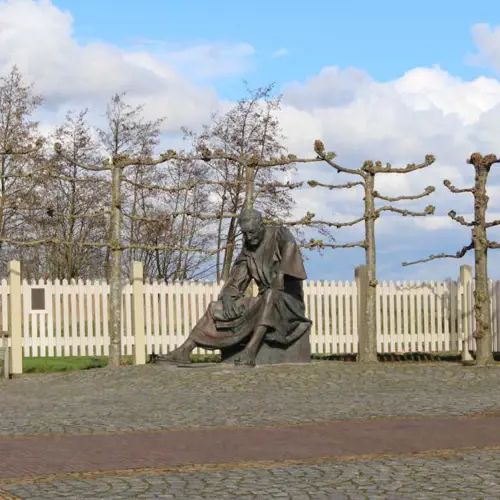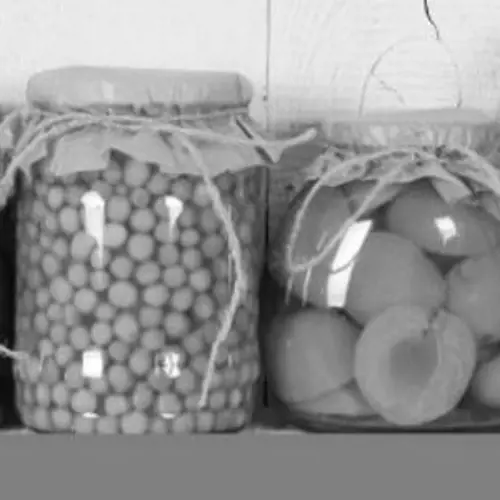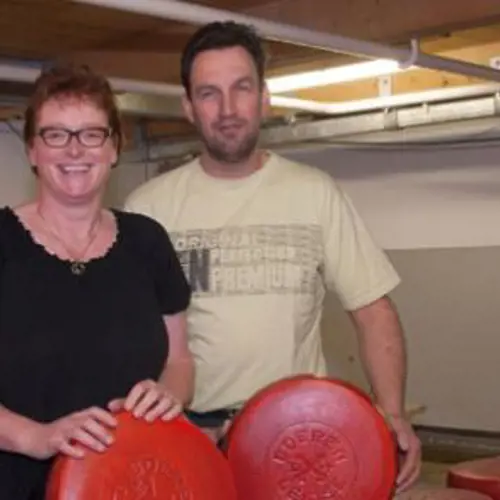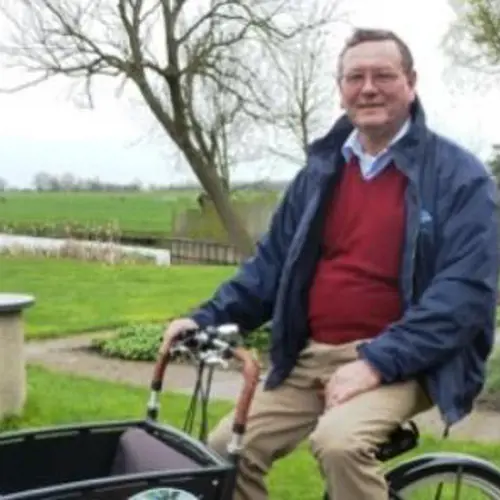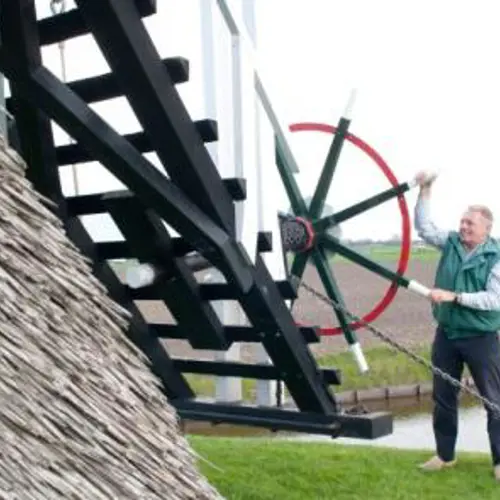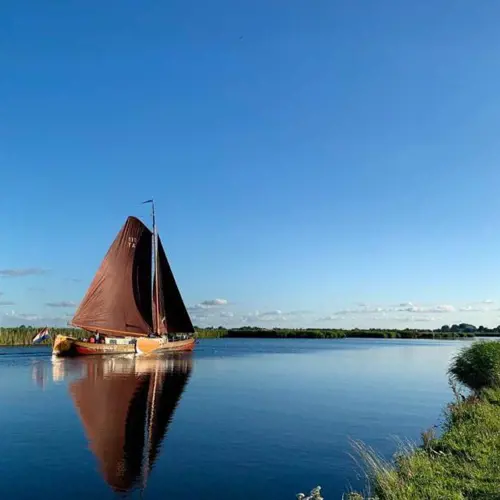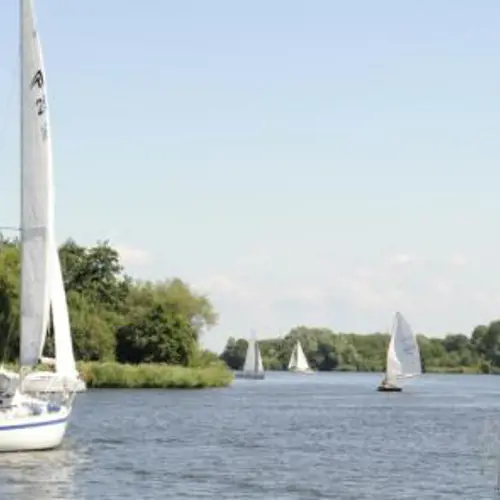Overview Stories and narratives
In order to get to know Kaag en Braassem better, you can read some stories about the area. Get to know Kaag en Braassem at its best!
Go directly to
Veenderpolder and Lijkerpolder: The Auction
In 1912 the plant growers cooperative Eendracht Maakt Macht (Unity Creates Power) built an auction house. Plant growers brought their products before the bell and the tribune with merchants by boat. The building has been partially preserved and now houses the Wagenaar restaurant.
Veenderpolder and Lijkerpolder: Bulbs and Flowers
Tulip bulbs are grown here since 1880. In 1927, bulbs were planted for the production of flowers for the first time. During wintertime, growers wanted to gain some extra income as they couldn’t cultivate vegetables. It was the start of a flourishing industry.
Veenderpolder and Lijkerpolder: One man down
During World War II an English pilot made an emergency landing in this polder. He crashed into a field of chrysanthemums and was rescued by two inhabitants of this polder. The Germans who chased the pilot got lost in the polder with its many pet fields.
Veenderpolder and Lijkerpolder: The lock
In 1632 a quayside was built around the polder due to the flooding of the Braassem. Four wooden locks were built for water regulation and accessibility. This is the only lock still there. It dates from 1897 and replaced the first, wooden sluice.
Mariahoeve-lodging; sleep and wake up between cows
Paul Graafland visited John and Mirjam van der Salm from Mariahoeve-lodging in Woubrugge (Ofwegen). A family business that not only runs a dairy farm, but rents out holiday cottages too. Where you sleep and wake up between cows.
Tulips from the Veen
The story of tulips from the Veen (abbreviation for Roelofarendsveen) is the story of passionate, hard-working, creative entrepreneurs. Veen tulips are popular around the world, and despite times of economic crisis, for a few euros consumers can create a comfortable ambience at home with a bouquet of colourful tulips.
Rotteveel Farmhouse cheese: from cattle farmer to cheese farm
Reporter Paul Graafland visited the Rotteveel family in Rijpwetering. An informative hour of nature education and his dream came true. What is farmhouse cheese, and how it’s made?
Veenderpolder and Lijkerpolder: The Gherkin monster
Back in the days, growers cultivated gherkins (groffies in Dutch) here. When a harvest failed, it was fault of the swimming Gherkin monster. Parents warned their children to stay away from the waterfront, the Gherkin monster loved delicious children’s legs too.
The story of the polders
It must have looked amusing. Inspectors of Hoogheemraadschap Rijnland tackling cracks in the dikes with a watering can and some soil. Very basic perhaps, but extremely effective. Boats sprayed the dikes from the water. The spring of 2011 threatened to become even dryer than the preceding year and peat dikes do not like dryness. If they dry out, they can break.
Vrouwtje Paling (“Lady Eel”)
Vrouwtje Paling (“Lady Eel”) had the gift of communicating with fish. When she sat by the waterside and called the fish, the bream, perch, eel, tench and carp heeded her call.
Veenderpolder and Lijkerpolder: Polder transport
The peat polder consisted of wet land with coppiced woodland. In order to grow on this,narrow strips of land were laid out with ditches around them for drainage. The fields could only be reached by boat. Everything was transported by barges.
Ferry hopping in the Kaag en Braassem wetlands
With all the water in Kaag en Braassem it can sometimes be difficult to get places. In order to help cyclists and pedestrians from having to go kilometres out of their way through the polders, ferries are used at various points. In most cases this very handy.
The tale of the tastiest Leidsche kaas
At the end of the nineteenth century the first member of the Heemskerk family set foot on the farm. It was quickly decided to make Boeren-Leidsekaas (a farmer’s cheese) from the milk provided by the cows. Fast-forward 116 years and Boris and Ellen Heemskerk are the fourth generation of the Leiden Heemskerk family continuing the tradition of making cheese at De Morgenstond.
If the blades are turning, the mill is open
Kinderdijk has many windmills. But Kaag en Braassem has more: twenty to be precise. One of them is the Kalkmolen along Doespolderweg in Hoogmade. Arie Driesprong is the proud miller of this hollow post mill and is happy to receive people. ‘A cup of coffee or tea is available for anyone who wants to look at the windmill. The windmill is open on Wednesdays and Saturdays and when the blades are turning.’
Veenderpolder and Lijkerpolder: Water Tower Tulip
Roelofarendsveen has traditionally been one of the villages where most tulips in the Netherlands are scalded. The huge tulip on the water tower reflects this top position, but also symbolises the importance of horticulture in this municipality.
